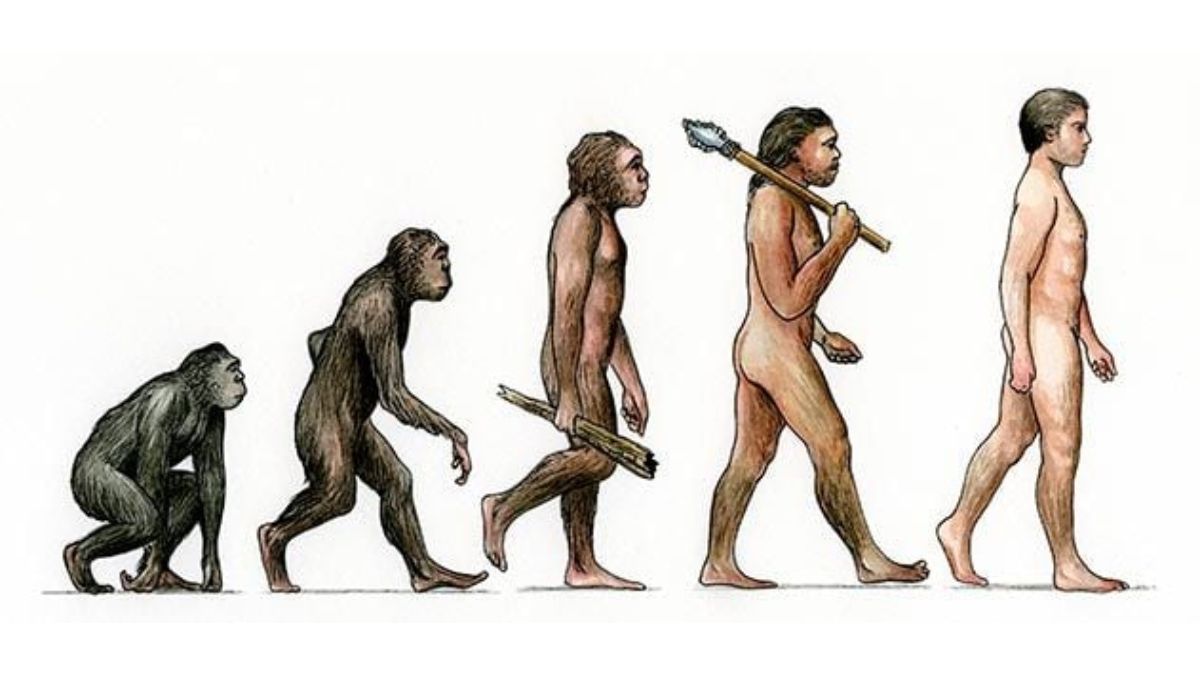The National Testing Agency has released the latest and updated NEET Syllabus 2026 at its official website so that all the aspirants of the NEET 2026 exam can start preparing accordingly. The NEET Biology Syllabus 2026 holds Evolution as one of the main chapters; therefore, it is crucial for all the aspirants that they study and understand every topic mentioned in this chapter. To guide aspirants through their preparation phase, we have shared the NEET Notes for the Evolution chapter in the article below. Scroll down in the article and access the download the Notes PDF for later use.
Evolution
Evolution is the process of change in the heritable characteristics of biological populations over successive generations, leading to the diversity of life. This change occurs through mechanisms like natural selection, where traits that improve survival and reproduction become more common, and genetic variation introduced by mutation and recombination. The theory posits that all species are related and descended from common ancestors, gradually changing and adapting to their environment over millions of years.
Scroll down in the article to get an overview of all the key topics that are to be studied in the Evolution chapter from the NEET Biology Syllabus 2026.
Introduction to Evolution
Evolution refers to the gradual change in living organisms over generations, leading to the development of new species from pre-existing ones. It describes how diversity in life forms has emerged on Earth.
- Evolution is a slow and continuous process.
- It is influenced by genetic variation, environmental changes, natural selection, and geographical isolation.
- Charles Darwin is known as the Father of Evolution for his theory of Natural Selection.
Origin of Life
1. Theories of Origin of Life
(a) Abiogenesis or Spontaneous Generation
- Proposed that life originated spontaneously from non-living matter.
- Later disproved by Louis Pasteur’s experiment.
(b) Biogenesis
- Life arises from pre-existing life.
- Supported by Pasteur’s swan-neck flask experiment.
(c) Chemical Evolution (Oparin–Haldane Hypothesis)
- Life originated from inorganic molecules under primitive Earth conditions.
- The first form of life was prokaryotic and anaerobic.
- Supported by Miller and Urey’s experiment (1953), which simulated early Earth conditions and produced amino acids.
Theories of Evolution
Theories of evolution explain how life on Earth changes over time through a process of descent with modification from common ancestors, driven primarily by natural selection. Key tenets include perpetual change, where species change over generations via genetic modification; common descent, the idea that all species have a common ancestor; and multiplication of species, where new species form from older ones. The modern theory also incorporates genetic mechanisms like mutation and recombination, which provide the raw material for natural selection to act upon.
1. Lamarckism (Theory of Inheritance of Acquired Characters)
- Proposed by Jean Baptiste de Lamarck.
- Organisms acquire traits during their lifetime and pass them to their offspring.
- Example: The long neck of the giraffe developed due to continuous stretching.
- Disproved, but laid the foundation for evolutionary thought.
2. Darwinism (Theory of Natural Selection)
- Proposed by Charles Darwin.
- Key concepts:
- Overproduction: Organisms produce more offspring than can survive.
- Variation: Individuals show differences.
- Struggle for existence: Competition for resources.
- Survival of the fittest: Favorable traits help survival.
- Natural selection: Those with adaptive traits reproduce more.
3. Mutation Theory (Hugo de Vries)
- Evolution occurs due to sudden large changes (mutations).
- Based on his experiments on Oenothera (evening primrose).
4. Modern Synthetic Theory (Neo-Darwinism)
- Combines Darwin’s Natural Selection with genetics.
- Factors involved:
- Mutation
- Genetic recombination
- Natural selection
- Gene flow
- Genetic drift
Evidence of Evolution
- Fossil Evidence
- Fossils provide direct evidence of ancient life forms.
- Example: Fossil of Archaeopteryx shows features of both reptiles and birds.
- Anatomical Evidence
- Homologous organs: Same structure, different functions (e.g., forelimbs of humans, bats, whales).
- Analogous organs: Different structure, same function (e.g., wings of birds and insects).
- Vestigial organs: Functionless remnants (e.g., human appendix, tailbone).
- Embryological Evidence
- Early embryos of vertebrates show similar structures, suggesting a common ancestry.
- Molecular Evidence
- Similarity in DNA, RNA, and proteins (like cytochrome c) indicates relatedness among species.
Mechanisms of Evolution
- Mutation – Sudden changes in DNA sequence causing new traits.
- Genetic Recombination – Mixing of parental genes during meiosis.
- Genetic Drift – Random change in allele frequency, especially in small populations.
- Gene Flow – Migration of individuals between populations.
- Natural Selection – Nature favors the survival of the best-adapted individuals.
Adaptive Radiation
- The diversification of a group of organisms into different ecological niches.
- Example: Darwin’s finches on the Galápagos Islands evolved different beak shapes to adapt to various food sources.









 NEET Preparation Strategy 2026: Detailed...
NEET Preparation Strategy 2026: Detailed...
 Free NEET Sample Papers 2026 PDF | Downl...
Free NEET Sample Papers 2026 PDF | Downl...
 Salt Analysis NEET Notes, Check Importan...
Salt Analysis NEET Notes, Check Importan...









